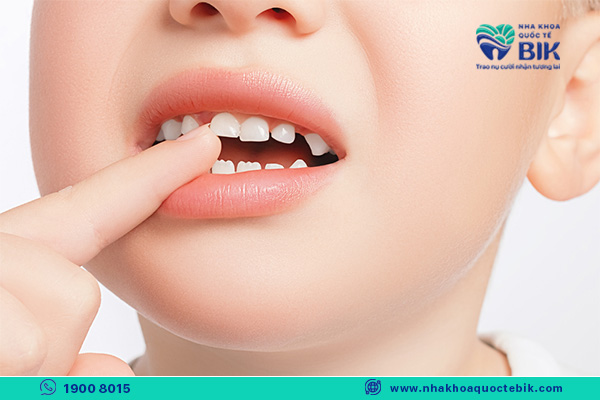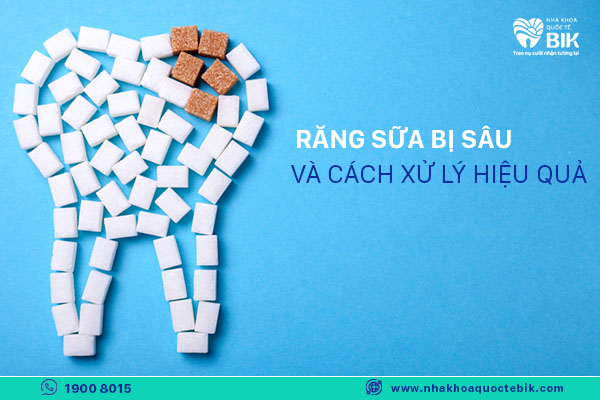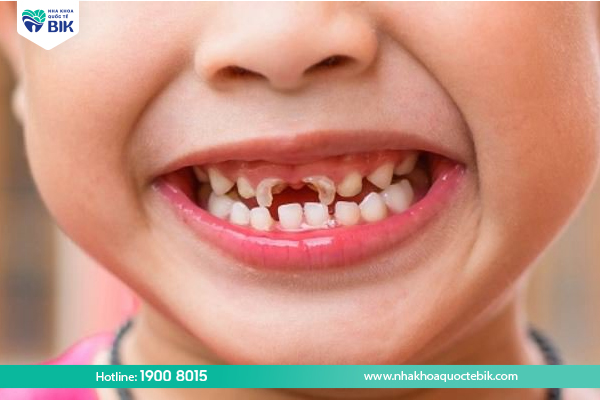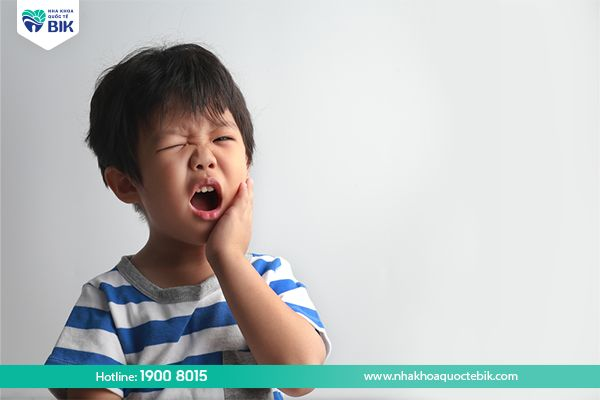Tooth decay is an oral disease that can occur at any age. If not treated promptly, the disease will gradually have serious complications such as chipping, cracking, loss of the entire tooth body or even permanent tooth loss. In fact, what to do when a 14-year-old has tooth decay depends on the severity of the tooth decay. Depending on each specific case, the doctor will prescribe different treatment methods.
1. Causes of tooth decay in children
Children with tooth decay at the age of 14 is not a rare phenomenon. Nowadays, there are many causes that can cause tooth decay in children such as:
1.1. Bacteria from plaque
Calcium or tartar is a phenomenon of plaque on teeth caused by sugar or starch from food accumulating and reacting with enzymes in saliva. At that time, tartar will stick to the gums and tooth roots. This is a favorable environment for bacteria to reside and thereby increases the risk of destroying tooth enamel and the appearance of cracks, cavities that destroy the tooth structure.
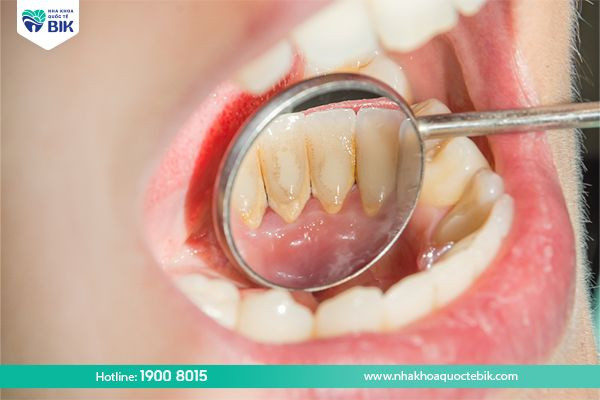
1.2. Due to tooth structure
In some children with uneven tooth structure, asymmetrical bite due to crooked, spaced teeth or weak enamel are all causes of tooth decay.
1.3. Due to unscientific nutrition
Nowadays, children often love foods containing a lot of sugar and starch, carbonated soft drinks, etc. These are all foods that are not good for oral health, they cause plaque and create a favorable environment for bacteria to grow.

1.4. Poor oral hygiene
Poor oral hygiene is one of the leading causes of tooth decay. When children do not clean their teeth and remove leftover food from their teeth properly, it will create favorable conditions for bacteria to grow and attack, damaging their teeth.
2. Consequences of tooth decay
Tooth decay can be easily recognized by observing black spots, holes on the teeth, accompanied by a state of prolonged sensitivity and pain. But when recognizing tooth decay by external signs, the tooth is already in a severe stage, the enamel is destroyed, the pulp is attacked. The tooth surface can be broken and damaged, broken or even only the tooth root remains.
When children experience this condition for a long time without proper treatment, it can cause many health effects such as:
– Teeth become discolored, enamel is damaged, causing yellowing and blackening of teeth.
– Long-term tooth decay can cause tooth decay bacteria to attack the adjacent teeth.
– Pain, sensitivity, and discomfort appear during daily chewing.
– Tooth decay in the incisors, upper canines or on the outside of the teeth causes loss of aesthetics, making the patient lose confidence.
– Risk of dental abscess, pulp inflammation and necrosis, blood infection,…
– Broken, chipped teeth, complete loss of the tooth body or even the tooth root. This greatly affects the chewing and pronunciation functions and can cause complications such as bone loss, jaw and face deformities.

3. What to do if a 14-year-old child has tooth decay
According to oral health experts, when a 14-year-old child has tooth decay, it is best for parents to detect early signs of tooth decay at home, then take the child to a reputable dental facility for examination and proper treatment. At the dental clinic, doctors will provide the best treatment methods for the child.
Currently, there are many folk remedies or home remedies, but they usually only help reduce pain and prevent tooth decay from spreading, but cannot treat the root cause and restore damaged teeth.
Here are some effective tooth decay treatments that dentists often prescribe:
3.1. Tooth filling
When parents discover tooth decay in children or adults, doctors often use tooth filling techniques to fill holes, cracks and cavities. In some severe cases, with signs of pulpitis, doctors may prescribe root canal extraction and removal before filling the tooth.
Tooth filling is a method that uses a safe, non-irritating composite material, especially one that has the same color as real teeth to fill the cavity without causing loss of aesthetics. This method helps prevent bacteria from attacking the injured tooth and at the same time restores the tooth’s aesthetics.
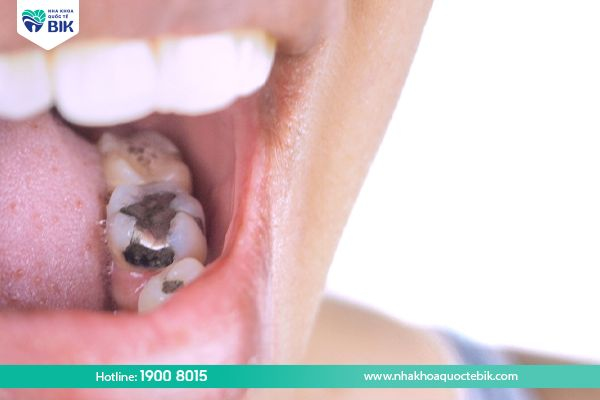
3.2. Porcelain crowns
Porcelain crowns are the recommended treatment for patients with permanent tooth decay, especially in molars that are severely decayed, chipped, or broken but still have roots. Porcelain crowns can help protect the entire tooth, prevent tooth decay from recurring, and restore the tooth’s aesthetics to the maximum.
This dental cosmetic solution is not only applied to teeth that are severely damaged by tooth decay, but also to teeth that are broken or chipped due to accidents or other causes. When performing porcelain crowns, if the patient takes care of them properly according to the doctor’s instructions, the teeth can last up to 15 years.
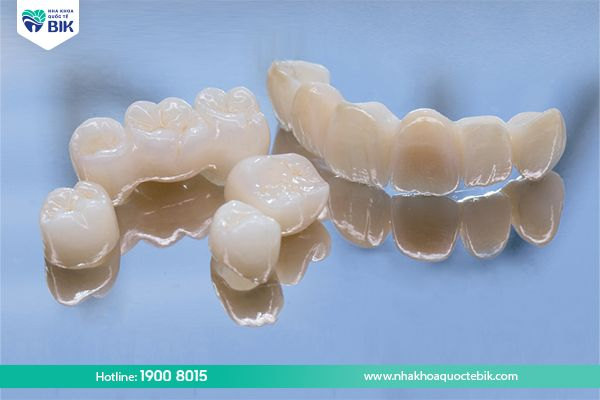
3.3. Tooth extraction and dental implant
When encountering a case of a 14-year-old patient with severe tooth decay to the point of no longer having a tooth root or all of the real teeth, doctors are forced to remove the decayed tooth to avoid complications as well as prevent the spread to healthy teeth next to it.
After tooth extraction, the doctor will advise the patient on a solution to restore the extracted tooth to ensure the proper development of other teeth on the jaw as well as the child’s jawbone. The most optimal tooth restoration solution today is dental implant.
However, in reality, this is not a recommended solution for young children with tooth decay. Because this method is only applicable to people with fully developed jawbones, usually over 16 years old.
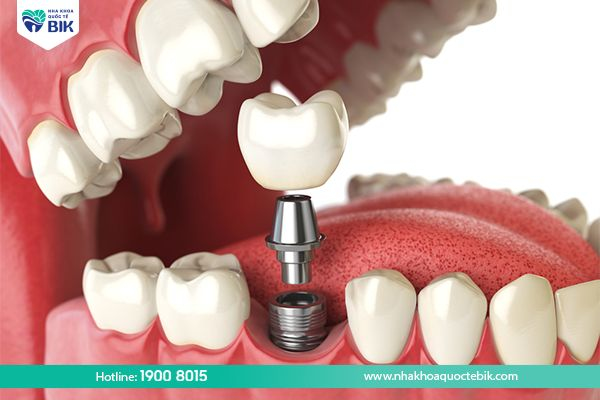
4. Ways to prevent tooth decay in children
To prevent tooth decay in children, parents should note the following:
– Remind children to brush their teeth at least twice a day, especially after each meal to remove food plaque and avoid tartar formation.
– Replace toothbrushes periodically at least every 3-4 months to ensure that bacteria do not accumulate and attack, causing tooth decay
Instructions for children to use dental floss to remove plaque in between teeth that the toothbrush cannot clean.
– Maintain a scientific diet, supplement with all the necessary vitamins and minerals to help increase resistance to help the body fight harmful bacteria.
– Limit children’s intake of foods high in sugar and starch.
– Visit the dentist regularly at least twice a year to ensure that oral health is checked regularly.

So tooth decay in 14-year-old children can come from many causes such as improper oral hygiene habits, diet or tooth structure, etc. However, regardless of the cause of tooth decay, it can affect oral health in the long term. When detecting tooth decay in children, parents should take their children to dental facilities for examination and treatment. BIK International Dental Clinic is a reputable place for treating tooth decay with a team of experienced doctors who will bring you the best quality.


